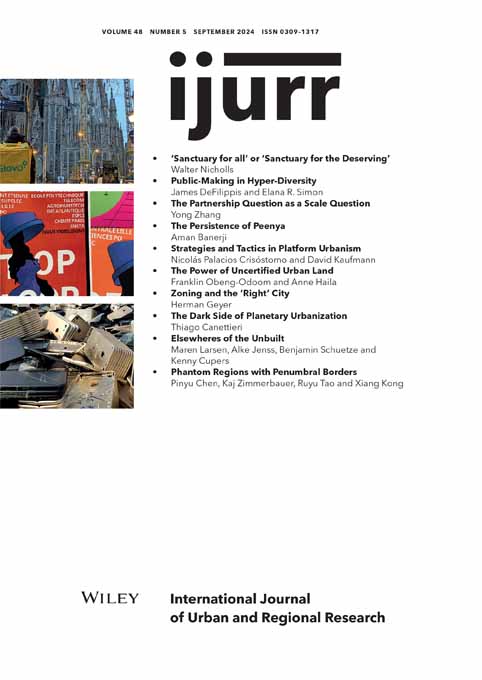THE PERSISTENCE OF PEENYA: Examining Industrial Space in Global Bangalore
This article was adapted from original fieldwork conducted as part of a master's thesis at Cornell University. The author thanks the members of his PhD committee, Fouad Makki, Lori Leonard, Neema Kudva and Michael Goldman, along with Maura Finkelstein and Begum Adalet for their incisive comments on previous drafts. The Indian Institute of Human Settlements (IIHS), especially Shriya Anand and Herry Gulabani, shared data and insights crucial to the findings presented in this article. Participants at IIHS's Urban Arc 2021 Conference and the Annual Conference on South Asia, Madison, Wisconsin, also made valuable suggestions. This article would not have been possible without the many interviewees, experts and residents of Bangalore who contributed their time to support my research. I thank Ram, Shashi and Harish for opening up their networks and connecting me with many of Peenya's industrialists. Special thanks to Chandanapriya Dhanraj for accompanying me on four days of interviews with smaller-scale industrialists and acting as interpreter. I also thank Sharat, Arindam and the late Rohit Bisht of AICCTU, and Peenya's many migrant workers, who helped bring the labor dimensions of Peenya into sharp focus. Finally, I thank the three anonymous IJURR reviewers for their comments. Cornell University's Sage Fellowship, Cornell's Einaudi Center Research Travel Grant and the Social Science Research Council's International Dissertation Research Fellowship provided vital funding support for my research. All remaining errors are mine.
Abstract
Since 1991, Bangalore has seen spectacular redevelopment through the political hegemony of real estate, IT and parastatals in local urban governance. The global city literature has demonstrated how gentrification and real estate redevelopment have been at the heart of such neoliberal urban transformation. Yet, the literature's roots in notions of ‘post-industrial’ cities obscure a view of how industry remains a key part of contemporary global cities. The persistence of the Peenya Industrial Area, one of South Asia's largest industrial areas today, reflects the negotiated, partial, contested and uneven character of the neoliberal urban project. Peenya demonstrates how obdurate inherited urban industrial geographies continue to shape the dynamics of world city-making. Established in the heyday of Bangalore's postcolonial public sector industrialization, Peenya employs over 180,000 workers in 8,236 manufacturing firms, even today. How does such vast industrial space persist within the core of a global city? I draw on interviews and qualitative field research to argue that Peenya's resilience is rooted in the complexity of private land aggregation and state-sponsored industrial relocation within an interwoven geography of tiny, legally fluid land holdings with variegated tenure regimes as well as the challenge of re-signifying space in a region with obdurate industrial imaginaries.




